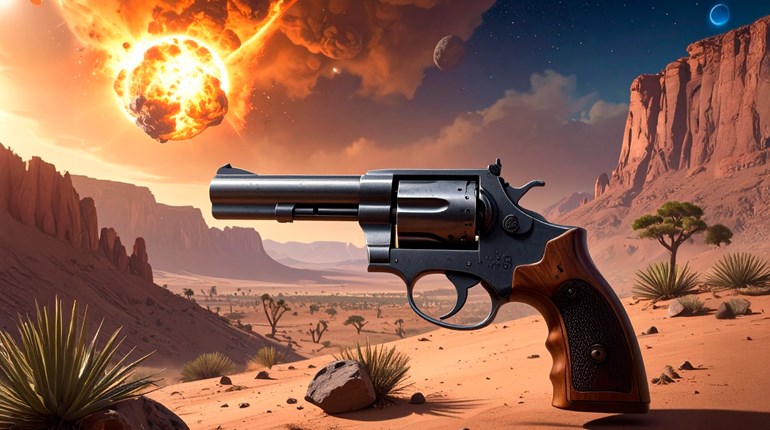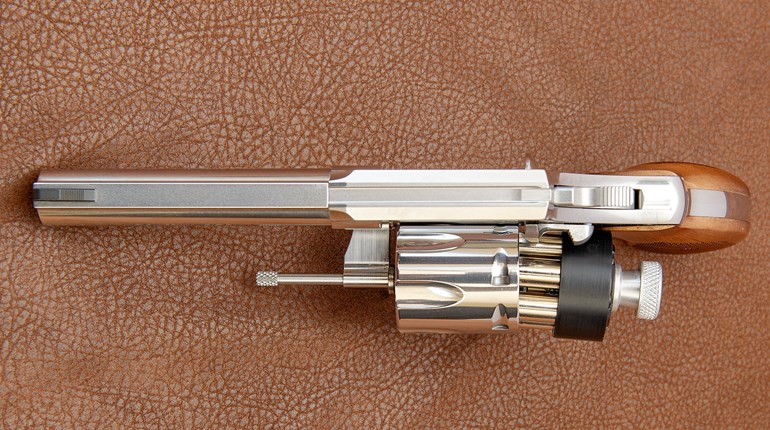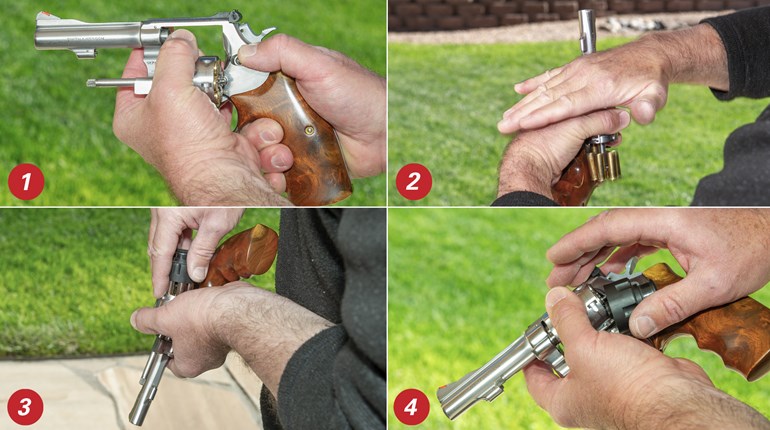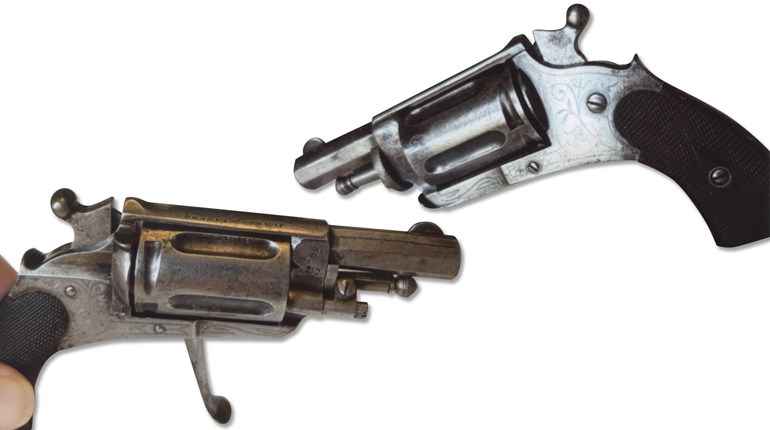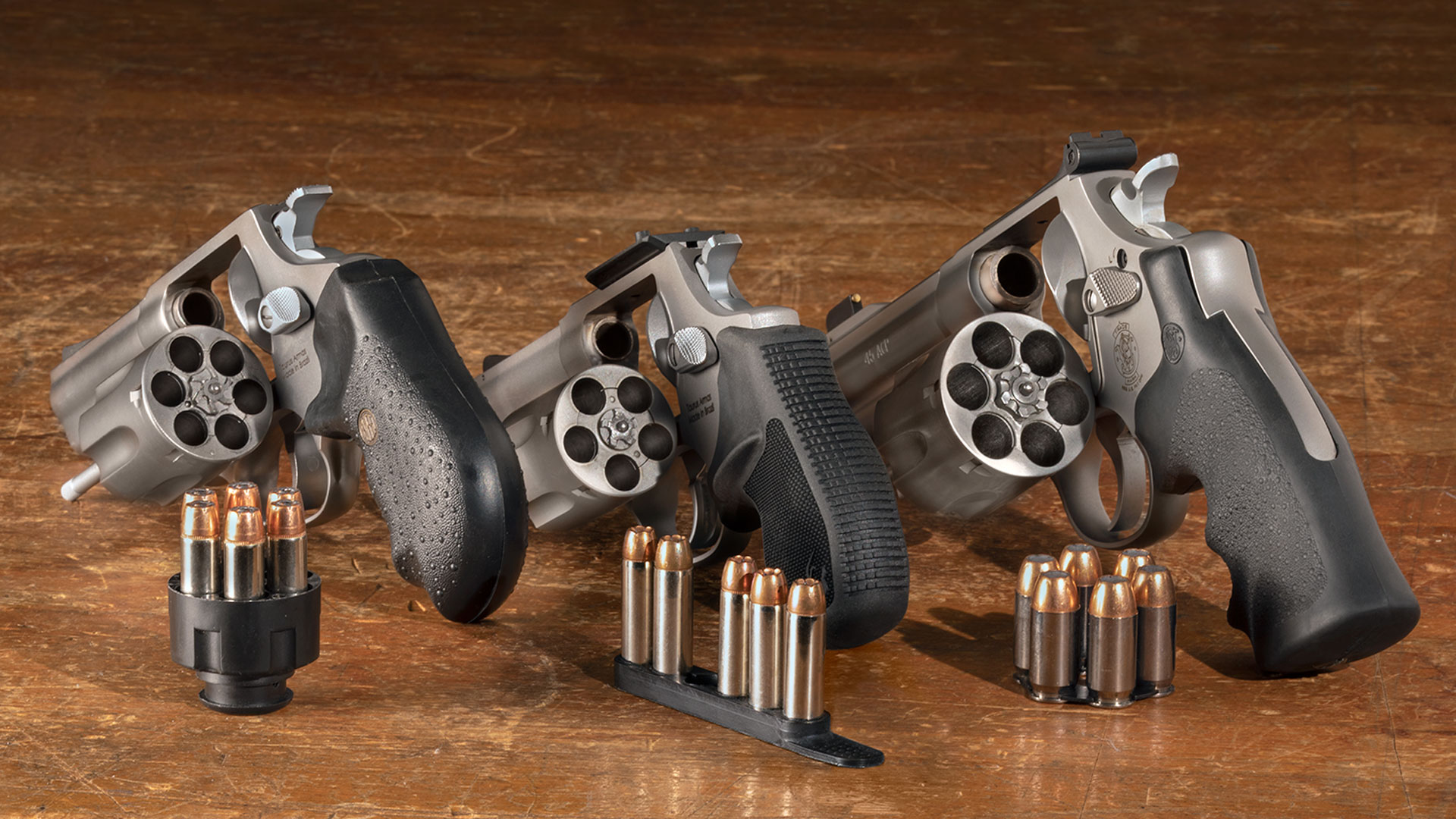
What does the double-action revolver have in common with the lever-action rifle or tube-magazine shotgun? I mean besides being elegant firearms from a more civilized era.
The answer is they all have relatively limited ammunition capacity and require specialized skills to manage ammunition and reload most efficiently, relative to their more modern, removable-magazine-fed semi-automatic successors.
Fortunately, the odds say you are almost certainly going to solve the tactical problem at hand with the ammunition that is in the firearm (or else it’s not gonna get solved), but the thing about statistics is that they have outliers.
A primary difference between reloading a semi-automatic pistol and a revolver is that with the semi-auto, you basically have one option for getting more cartridges into your blaster: the magazine.
With the revolver, there are numerous ways to recharge your wheelgun’s payload, and they all have their pluses and minuses. We aren’t going to make fun of any of them, just examine the options.
Well, one way would be to carry loose rounds in your pocket. Given the laws of probability, there’s one dude out there walking the earth with a revolver and six loose rounds rolling around loose in his jeans. That guy’s doing it wrong, and he really needs to stop and try something better.
If you just gotta carry individual rounds and stuff them into the charge holes by hand, there are two basic ways to do so that aren’t all soup-sandwich-y. The first is a holder with cartridge loops. These are generally leather or nylon sleeves that slide onto your trouser belt with enough loops to completely refill the wheelgun, sometimes twice over. While still reasonably common in the hunting field, these are not typically seen in the realm of defensive carry for a couple of reasons. The primary one is that plucking individual rounds out of loops one or two at a time and stuffing them into the cylinder is a process that could be timed with a sundial. The other downside is that they’re hardly discreet (assuming you’re in an environment where discretion is preferred). If a windblown shirttail should uncover a row of cartridge loops, everybody who’s seen a cowboy movie as a kid knows what they’re looking at; nobody’s going to mistake a row of nickeled cartridge cases for a cell-phone holder.
The better alternative for carrying rounds like this is an artifact called the “dump pouch.” In fact, that’s generally what initially replaced cartridge loops on police duty belts back in the revolver’s heyday. Essentially a little leather or fabric envelope that rides horizontally on the belt, the dump pouch holds enough loose rounds to completely reload the revolver. It opens at the bottom or along the front and, as the name implies, dumps a handful of loose rounds all at once into the palm of the paw that popped it open. The downside here is that there’s the fumble potential of dropping a few rounds out of the five or six that hit your hand simultaneously, and it also requires a certain amount of manual dexterity to execute the hand-jive required to feed individual rounds into charge holes from the pile in your grasp.
While dump pouches have largely fallen out of favor, the next step in revolver-reload technology is still in wide use. In fact, it’s in wider use now than it was at its inception back when wheelguns still ruled the duty holsters of America.
We’re going to call it the “speed strip” because that was Bianchi’s trade name for it and, just like every wispy bit of paper you blow your nose in is a “kleenex” now, and you “xerox” something in a copier even if it’s made by Canon or Ricoh, a rubber strip that holds a row of revolver cartridges is generally referred to as a “speed strip” even if it’s actually a QuickStrip from Tuff Products.
The original Bianchi Speed Strips came in any flavor you wanted, provided that the flavor you wanted was a black rubber strip with a thumb tab for gripping at one end and cutouts to hold six .38 Spl./.357 Mag. cartridges. At the time, this was fine because the overwhelming majority of duty/service revolvers were .38 Spl./.357 Mag. six-shooters.
Savvy trainers, like Massad Ayoob, recommended that if one were to use one with a five-shot Smith & Wesson J-frame or Ruger SP-101, just carry five rounds with the last hole closest to the thumb tab left empty. The theory behind this is the extra space to get a better grip on the speed strip outweighed any theoretical benefit from the extra round you were probably going to discard with the strip after hurriedly reloading anyway.
An alternative method for using the classic speed strips with a five-shot snubby, popularized by Michael de Bethencourt, was to only put four rounds in the strip: two rounds, then two empty holes, and then two more rounds. This made it easier and less fumble-prone to pop two rounds into a small cylinder at a time on the theory that—should you find yourself at the less-likely spot of shooting your snubby dry and needing to reload in the middle of a private citizen’s defensive-gun usage—getting two rounds into the gun and getting it back up and running as quickly as possible might be preferable to taking the time to refill all five charge holes.
Once Bianchi’s patents expired in the early 2000s, Tuff Products got into the game with its QuickStrips. The company started making the cartridge holders in all manner of chamberings, as well as in eight-round variants.
While the eight-hole QuickStrips might have appealed to owners of Smith & Wesson Model 627s and the like, they also allowed snub-nose and medium-frame revolver shooters to load two rounds, leave a gap, load two more, leave another gap and finish up with another pair of rounds. This gave a completely modular reloading solution for five- and six-shot revolvers. If you needed to get two or four rounds into the gun in a hurry with a minimal chance of fumbling the load, you can. If you have the time to top the cylinder all the way up, you can do that, too.
While speed strips have been supplanted in duty and competition use, they remain popular for CCW revolver shooters because the slim strips can slide into a jeans pocket and remain flat, with a minimum of printing through the fabric.
Finally, there are the methods of getting an entire cylinder full of ammo into the revolver at once: speedloaders and full-moon clips.
Full-moon clips hold a full cylinder’s worth of cartridges and are loaded into the gun along with the rounds. This makes them the fastest method of recharging a wheelgun, which is why they’re super-popular in revolver-centric competition. It can be difficult to get live rounds in them and even harder to get spent cases out. Also, they’re on the fragile side and can take a bend, causing the cylinder to bind, so are best left to sports. The real downside is they are made to work with rimless cartridges usually associated with semi-automatics, and not every revolver can accept them.
Speedloaders are the most popular and have been for decades now. It’s important, however, to distinguish between competition- and carry-oriented loaders. HKS speedloaders, for instance, are sometimes derided for not being very speedy, but they hold on to cartridges like grim death. I once had a five-shot .44 Spl. HKS loader—the Model 44CA, intended for the Charter Arms Bulldog—roll around forgotten and neglected in the bottom of a purse for years before I fished it out, all five rounds still firmly clamped. Sure, with the HKS you need to insert the rounds and then twist a knob to release them into the cylinder, while the fastest compe-tition speedloaders literally launch the cartridges when inserted, but they can also launch the cartridges in the pouch, pocket or purse where the speedloader is carried. Save the gamer carriers for the games, where they excel.
Remember, it’s fairly unlikely that you’ll have to reload your wheelgun in a defensive scenario, but if you do, the most important thing is that the cartridges be there in your carrier. Otherwise, you’re that guy with the loose rounds in your pocket. Don’t be that guy.












